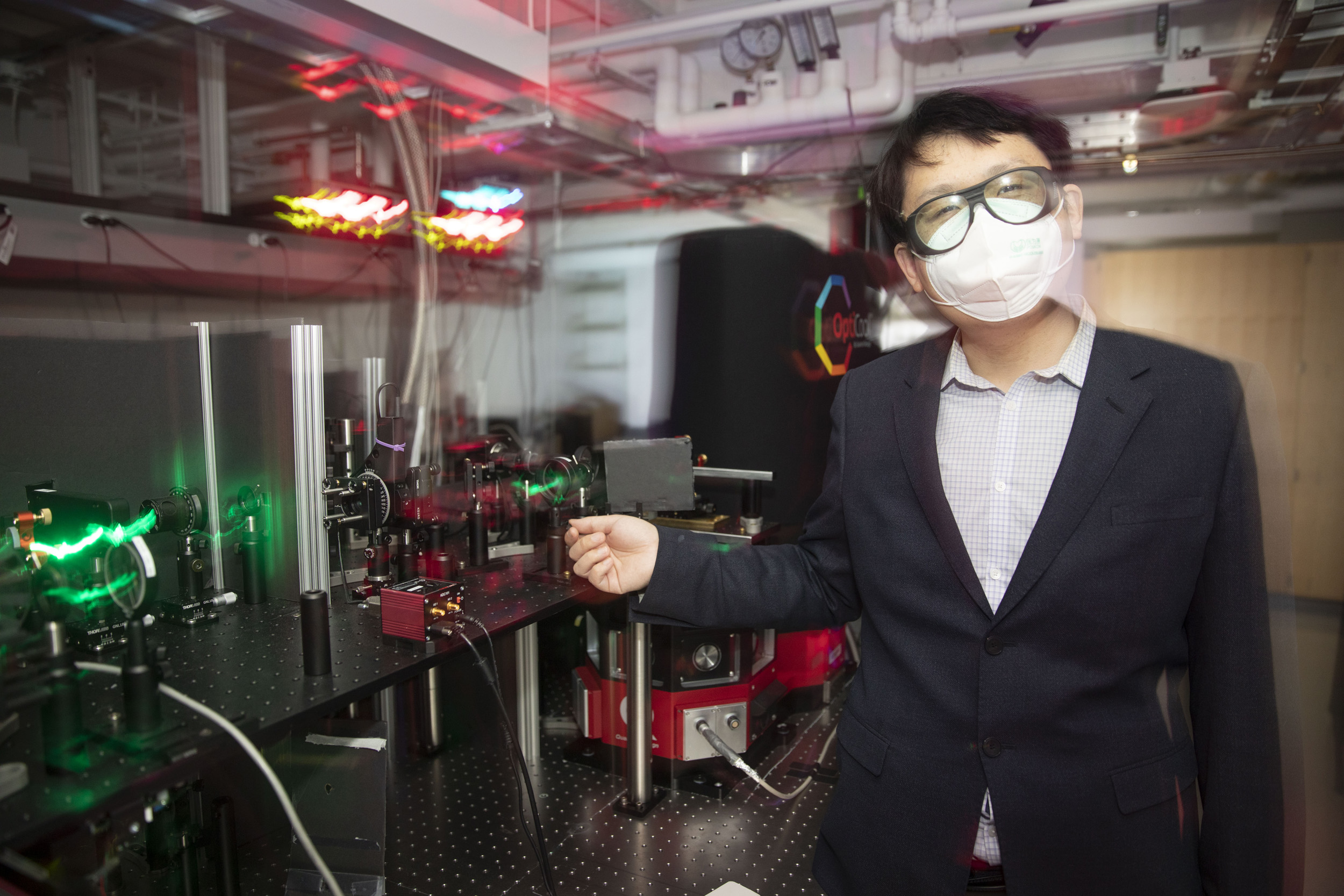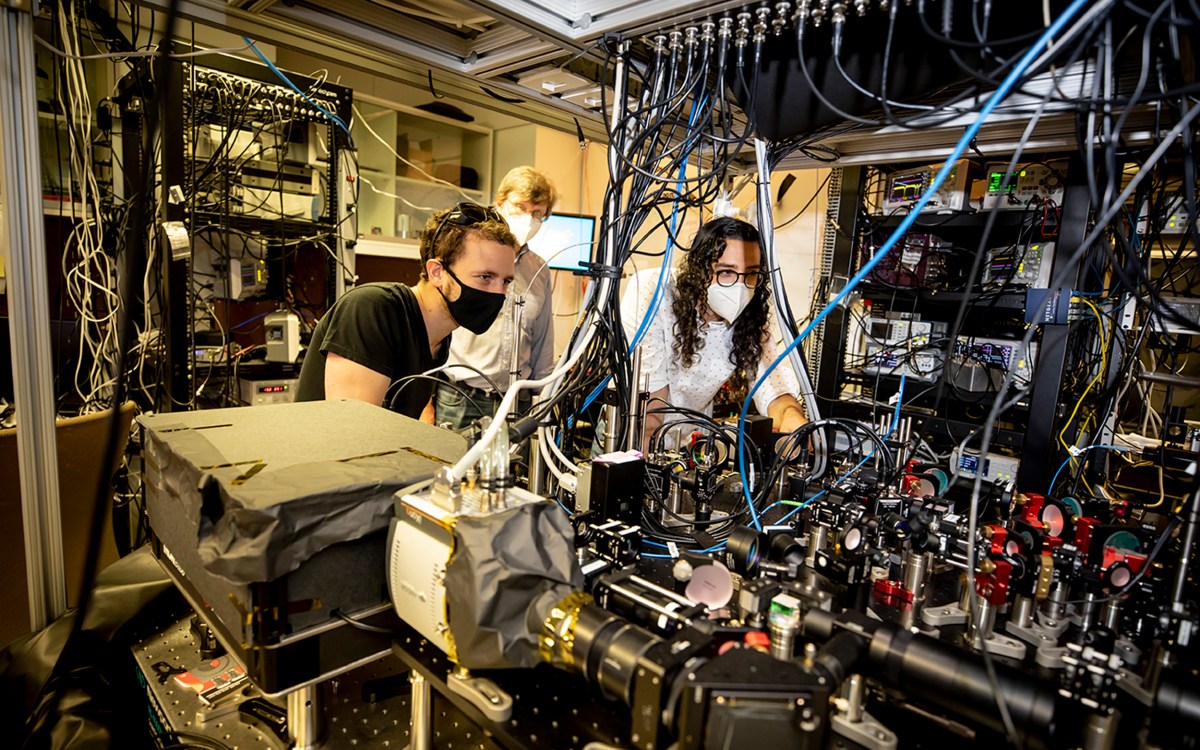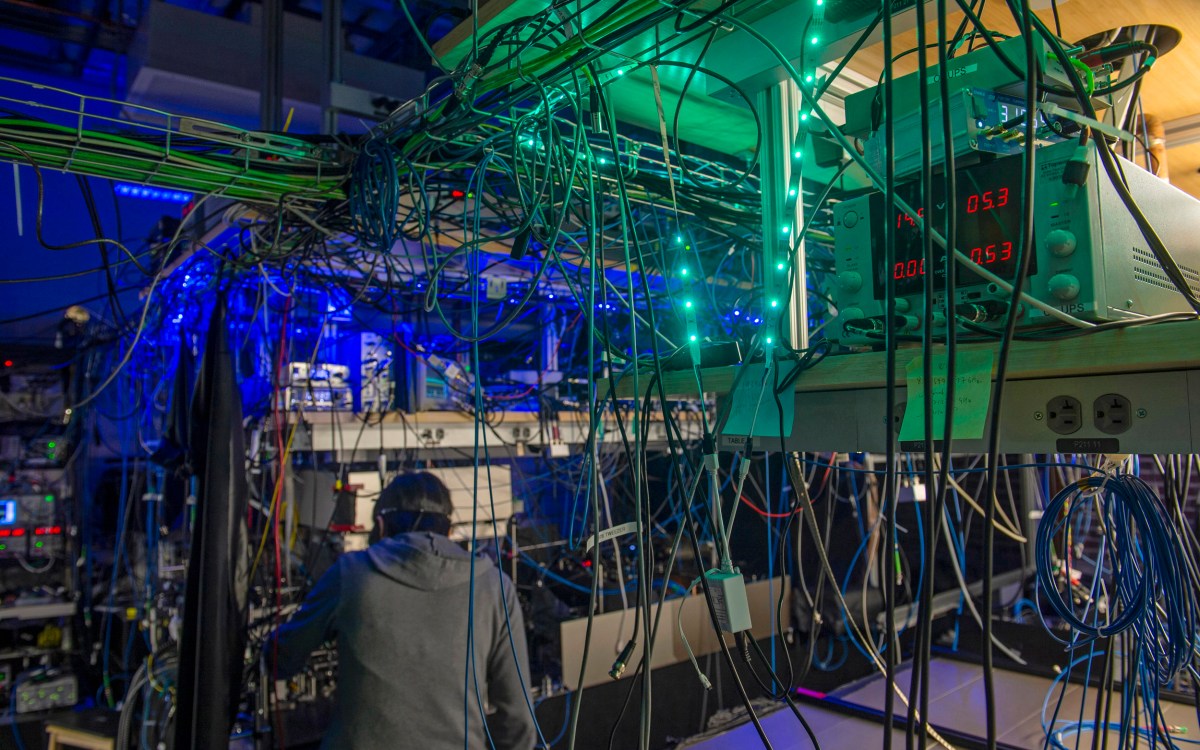
Suyang Xu is an expert on Angle-Resolved Photoemission Spectroscopy (ARPES), a powerful tool used to directly visualize the electronic band structures of materials.
Kris Snibbe/Harvard Staff Photographer
Unlocking potential of quantum technologies
Chemical biology professor works to crack secrets of new states of matter
Throughout human history, most of our efforts to store information, from knots and oracle bones to bamboo markings and the written word, boil down to two techniques: using characters or shapes to represent information. Today, huge amounts of information are stored on silicon wafers with zeros and ones, but a new material at the border of quantum chemistry and quantum physics could enable vast improvements in storage.
Suyang Xu, assistant professor of chemical biology, is tying quantum mechanical “knots” in topological materials, which may be the key to unlocking the potential of quantum technologies to store and process vast arrays of information and bring game-changing advances in a variety of fields.
“Imagine a rope identified by a number of knots,” Xu said. “No matter how much the shape of the rope is changed, the number of knots — known as the topological number — cannot be changed without altering its fundamental identity by adding or undoing knots.” It is this robustness that potentially makes topological materials particularly useful.
Xu, who took his undergraduate degree in China, first encountered topological materials when he started graduate school in physics at Princeton in 2008 when the materials were first being created. Xu’s research interests involve electronic and optical properties in quantum matters, such as topological and broken symmetry states.
Topological materials move electrons along their surfaces and edges without any friction or loss, making them promising materials for super-high-speed electronics, like quantum computers. Such devices have the potential to be more powerful than existing computers because their quantum bits, referred to as “qubits,” take advantage of two properties of quantum states —superposition and entanglement — to encode information.
However, quantum states are delicate and when they are perturbed can lead to decoherence, falling out of sync and losing stored information. Because topological materials are robust and resist perturbation, they could be used to build more resilient and longer-lasting qubits.
Xu’s physics background and experimental chemistry experience enable him to test quantum theories in the real world. “Even though physicists and chemists both study materials, physicists tend to look at them more as abstract equations, while chemists engage with their emergent properties,” Xu said. “Since I have a pure physics background and speak the language of chemistry, I can translate difficult theories into real space.”
With a few well-reasoned assumptions and some innovative techniques, Xu and his team bridge the gap the between quantum physics and chemistry, testing theories with materials. First, they predict which materials may realize topological properties. The chemical formulas for the elements in such materials do not provide adequate insight; Xu is also interested in their macroscopic properties.
“If I were to study water, steam, and ice only by looking at their H20 equation, I would learn nothing about their different properties.” Xu said. “As a chemist, I am trying to find certain elements and organize them microscopically, so that they can produce a topological property.”
Xu’s lab then tests current theories about chemical reactions against experimental data to expand the map of topological materials. Using specialized refrigerators in which atoms and molecules are cooled to temperatures just above absolute zero, at which they become highly controllable and more visible, Xu and his team test the flow of electrons through materials with currents.
They are also interested in the optical properties of materials, testing to see their interaction with light. The team fires photons at the materials and gathers quantum mechanical topological data based on how light scatters, reflects, and transmits. Xu has already yielded strong evidence for theoretical particles that answers one of the most vexing problems in quantum science.
“Since I have a pure physics background and speak the language of chemistry, I can translate difficult theories into real space.”
Suyang Xu
In a study reported last year in Nature, Xu and his team set out to study the properties of axions, a theoretical elementary particle proposed by physicist Frank Wilczek. The Nobel Prize winner named it after a brand of laundry detergent because it “cleaned up” the complex, highly technical Strong Charge Parity problem in quantum chromodynamics by filling in a gap between theory and observation.
In addition one of the most enticing predictions about axion states is that we may be able to use them to control magnetization, which could revolutionize all kinds of technology as magnetism and magnetic materials are at the heart of many, many applications.
In a class of topological materials called axion insulators, Xu’s team sought to simulate the behavior of the axion. They fabricated a dual-gated MnBi2Te4 device in an argon environment, and measured its electrical and optical properties, uncovering new pathways to detect and manipulate the rich internal structure of topological materials.
“We discovered a real material that can support the axion insulator state,” Xu said. “We confirmed that it had the predicted properties, a strong coupling between electricity and magnetism.”
Having provided evidence for a theorized particle, Xu plans to explore the spin properties of Weyl semimetals, a new state of matter that has an unusual electronic structure that has deep analogies with particle physics and leads to unique topological properties.







